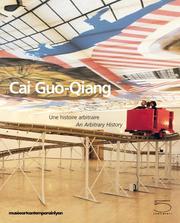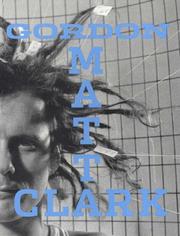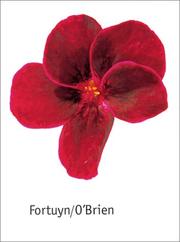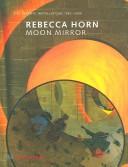| Listing 1 - 10 of 32 | << page >> |
Sort by
|


ISBN: 8874390122 2906461598 Year: 2002 Publisher: Milan 5 continents
Abstract | Keywords | Export | Availability | Bookmark
 Loading...
Loading...Choose an application
- Reference Manager
- EndNote
- RefWorks (Direct export to RefWorks)
hedendaagse kunst --- in situ --- installation artists --- Guo-Qiang, Cai --- Cai Guo-Qiang --- Cai Guo Qiang
Book
ISBN: 9789077174845 Year: 2012 Publisher: Amsterdam Frame Publishers
Abstract | Keywords | Export | Availability | Bookmark
 Loading...
Loading...Choose an application
- Reference Manager
- EndNote
- RefWorks (Direct export to RefWorks)
Quinze, Arne --- Art and literature --- Art et littérature --- In situ (Sculpture) --- In situ sculpturen --- Kunst en literatuur --- Peinture et littérature --- Schilderkunst en literatuur --- Sculpture in situ --- Site sculpture --- Site-specific sculpture --- Site-specifieke beeldhouwkunst --- Site-specifieke sculpturen --- 745.071(493) --- Belgische designers --- designers --- België --- Arne Quinze --- installatiekunst --- kunst 21e eeuw --- Belgische kunstenaars --- Contains audio-visual material --- Outdoor sculpture --- Belgium --- Oostende --- De Coster, Saskia --- mixed-media artists
Book
ISBN: 9783775747929 Year: 2021 Publisher: Berlin Hatje Cantz Verlag
Abstract | Keywords | Export | Availability | Bookmark
 Loading...
Loading...Choose an application
- Reference Manager
- EndNote
- RefWorks (Direct export to RefWorks)
Art --- body art [visual works, performance] --- performance art --- cloth --- empaquetages --- in situ --- rubber [material] --- gender [sociological concept] --- Bucher, Heidi --- sculpture [visual works] --- installations [visual works] --- architecture [object genre]
Digital
ISBN: 9789048132607 9789048132614 9789048132720 9789400791190 Year: 2010 Publisher: London Springer
Abstract | Keywords | Export | Availability | Bookmark
 Loading...
Loading...Choose an application
- Reference Manager
- EndNote
- RefWorks (Direct export to RefWorks)
Preface 1. INTRODUCTION TO MOLECULAR DIAGNOSTICS 1.1 Prologue 1.2 Clinical diagnostics entering a new phase 1.3 Concept of Molecular Diagnostics 1.4 Molecular Diagnostic Technology and Health Care Industries 1.5 Molecular diagnostic test 1.6 Conclusion 2. OMICS TECHNOLOGY 2.1 Prologue 2.2 Concept of Omics 2.3 Genome and Genomics 2.4 Transcriptome and Transcriptomics 2.5 Proteome and Proteomics 2.6 Metabolome and Metabolomics 2.7 Integration of Omic 2.8 Conclusion 3. RECOMBINANT DNA PHARMACEUTICALS 3.1 Prologue 3.2 Concept 3.3 Tools of Recombinant DNA Technology 3.4 Therapeutic Applications of Recombinant DNA derived Pharmaceuticals 3.5 Conclusion 4. APTAMERS: IN VITRO DNA SELECTION 4.1 Prologue 4.2 Concept 4.3 Selection of Aptamers 4.4 Applications of DNA and RNA Aptamers 4.5 conclusion 5. REPORTER GENE 5.1 Prologue 5.2 Concept 5.3 Reporter Gene Assay 5.4 Transformation and Transfection Assays 5.5 Gene Expression Assays 5.6 Promoter Assays 5.7 Role of Reporter Gene Assay in Molecular Diagnostics 5.8 Conclusion 6. IMPACT OF HCP ON MOLECULAR DIAGNOSTICS 6.1 Prologue 6.2 Origin of the Human Genome Project 6.3 Goals and Issues of HGP 6.4 The Human Genome and Genetic Variation 6.5 Human Genome Project and Health Services and Improve Health 6.6 Single Gene Disease 6.7 New and Individualised Drug Treatments 6.8 The Achievements and Challenges of The HGP 6.9 Information Transfer 6.10 Impact of the Human Genome Project on Epidemiologic Research 6.11 Impact of the Human Genome Project on Our Genomic Makeup 6.12 Conclusion 7. MOLECULAR DIAGNOSIS IN THE POST GENOMIC AND PROTEOMIC ERA 7.1 Prologue 7.2 The Genomic Era 7.3 Concept 7.4 The Post Genomic Era 7.5 Advantages of Combining Multiple Types of Data 7.5 Biomedical Research in the Postgenomic Era 7.6 Conclusion 8. ETHICS, PATENTS AND REGULATIONS 8.1 Prologue 8.2 Concept of Ethical, Legal, and Social Issues 8.3 Ethical and Social Issues in Diagnostic Molecular Genetics 8.4 Confronting the Ethical, Legal and Social Issues 8.5 Genes and Disease 8.6 The Existence of Genetic Information 8.7 Impact of the Human Genome Project at the Interface between Patent and FDA Law 8.8 Regulatory Process 8.9 Conclusion 9. POLYMERIZED CHAIN REACTION 9.1 Prologue 9.2 The Concept 9.3 PCR Optimisation 9.4 Advances in the PCR Technique 9.5 Cloning PCR Products 9.6 PCR as a Diagnostic Tool 9.7 Conclusion 10. IN SITU HYBRIDISATION 10.1 Prologue 10.2 The Concept of in SITU Hybridisation 10.3 Disadvantages of Radioactive Probes 10.4 Solving the Problem: Advent of Fish Technique 10.5 Applications of Fish as a Diagnostic Tool for Research 10.6 Recent Advances of in SITU Hybridisation Technology 10.7 Conclusion 11. IMMUNOASSAY ELISA 11.1 Prologue 11.2 Concept 11.3 Types of Immunoassay 11.4 Recent advances in the Field of Immunodiagnostics 11.5 Clinical Applications of Immunoassay 11.6 Utilization and Interpretation of Immunological Tests 11.7 Conclusion 12. PHAGE DISPLAY 12.1 Prologue 12.2 Concept 12.3 Phage-Display Libraries as Populations of Replicable, Mutable Chemical 12.4 Practical Applications of Phage Display 12.5 Conclusion 13. MICROARRAY 14. DNA BIOSENSORS 15. MOLECULAR MICROBIOLOGICAL TESTING 16. PTOTEOMIC TECHNOLOGY 17. NANOMEDICINE 18. BIOMARKERS 19. DIAGNOSIS AND MONITORING OF INFECTIONS 20. DIAGNOSIS OF MUTATION AND GENETIC DISORDERS 21. DIAGNOSIS OF COMPLEX DISEASES 22. BIOCHIPS 23. PERSONALISED MEDICINE 24. BIOPHARMACEUTICAL INDUSTRY AND HEALTH CARE 25. FORENSIC MEDICINE 26. PHARMACOGENOMICS 27. GENE TECHNOLOGY IN FORENSIC SCIENCES 28. FOOD DIAGNOSTICS 29. RAPID DIAGNOSTIC METHODS FOR BIOWARFARE 30. SEGMENTS OF MOLECULAR DIAGNOSTICS : MARKET PLACE A rapid development in diverse areas of molecular biology and genetic engineering resulted in emergence of variety of tools. These tools are not only applicable to basic researches being carried out world over, but also exploited for precise detection of abnormal conditions in plants, animals and human body. Although a basic researcher is well versed with few techniques used by him/her in the laboratory, they may not be well acquainted with methodologies, which can be used to work out some of their own research problems. The picture is more blurred when the molecular diagnostic tools are to be used by physicians, scientists and technicians working in diagnostic laboratories in hospitals, industry and academic institutions. Since many of them are not trained in basics of these methods, they come across several gray areas in understanding of these tools. The accurate application of molecular diagnostic tools demands in depth understanding of the methodology for precise detection of the abnormal condition of living body. To meet the requirements of a good book on molecular diagnostics of students, physicians, scientists working in agricultural, veterinary, medical and pharmaceutical sciences, it needs to expose the reader lucidly to: Give basic science behind commonly used tools in diagnostics Expose the readers to detailed applications of these tools and Make them aware the availability of such diagnostic tools The book will attract additional audience of pathologists, medical microbiologists, pharmaceutical sciences, agricultural scientists and veterinary doctors if the following topics are incorporated at appropriate places in Unit II or separately as a part of Unit-III in the book. Molecular diagnosis of diseases in agricultural crops Molecular diagnosis of veterinary diseases. Molecular epidemiology, which helps to differentiate various epidemic strains and sources of disease outbreaks. Even in different units of the same hospital, the infections could be by different strains of the same species and the information becomes valuable for infection control strategies. Drug resistance is a growing problem for bacterial, fungal and parasitic microbes and the molecular biology tools can help to detect the drug resistance genes without the cultivation and in vitro sensitivity testing. Molecular diagnostics offers faster help in the selection of the proper antibiotic for the treatment of tuberculosis, which is a major problem of the in the developing world. The conventional culture and drug sensitivity testing of tuberculosis bacilli is laborious and time consuming, whereas molecular diagnosis offers rapid drug resistant gene detection even from direct clinical samples. The same approach for HIV, malaria and many more diseases needs to be considered. Molecular diagnostics in the detection of diseases during foetal life is an upcoming area in the foetal medicine in case of genetic abnormalities and infectious like TORCH complex etc. The book will be equally useful to students, scientists and professionals working in the field of molecular diagnostics.
Macromolecules --- Molecular biology --- PCR (polymerase chain reaction) --- klinische chemie --- recombinant DNA --- in situ hybridisatie --- biosensoren --- proteomics --- genomics --- microarrays --- biogeneesmiddelen --- klonen --- polymeren --- moleculaire biologie --- proefdieren


ISBN: 9780300123951 Year: 2007 Publisher: New Haven, Conn. Yale University Press/Whitney Museum of American Art
Abstract | Keywords | Export | Availability | Bookmark
 Loading...
Loading...Choose an application
- Reference Manager
- EndNote
- RefWorks (Direct export to RefWorks)
Book
ISBN: 9789462263857 946226385X Year: 2020 Publisher: Eindhoven Lecturis
Abstract | Keywords | Export | Availability | Bookmark
 Loading...
Loading...Choose an application
- Reference Manager
- EndNote
- RefWorks (Direct export to RefWorks)
Het Nederlandse collectief We Make Carpets heeft een fascinatie voor eenvoudige gebruiksvoorwerpen. De afgelopen tien jaar hebben zij de wereld veroverd met het maken van site-specific installaties in een wonderlijk proces van herwaardering van deze producten. Duizenden objecten worden door dagenlange noeste arbeid, getoond in aantrekkelijk kleurrijke patronen en texturen. Door het nauwkeurig neerleggen, in een steeds weer andere richting of andere zijde, laat We Make Carpets de toeschouwer alledaagse producten zien zoals hij die nog nooit eerder heeft gezien. Het boek toont 32 installaties gemaakt tussen 2014 en 2020. Paginavullende foto's van de kunstwerken worden begeleid door teksten van curatoren, publiek en directbetrokkenen bij de producties. Het boek geeft inzicht in de werkwijze van We Make Carpets, hun belevingswereld en de diverse locaties waar zij exposeerden zoals 21_21 DESIGN SIGHT in Tokio, Stedelijk Museum Amsterdam, National Gallery of Victoria in Melbourne. Voor het eerst zijn de tijdelijke werken van dit Nederlandse collectief samen gebundeld en permanent zichtbaar.
Installations (Art) --- Art, Modern --- 746.07 --- Kunstenaarscollectieven ; We Make Carpets --- Beeldende kunst ; installaties ; 2014-2020 ; We Make Carpets --- Installaties ; in-situ --- Beeldende kunst ; participatie van de toeschouwer --- Contemporary art --- Modernism (Art) --- Installation art --- Environment (Art) --- Textielkunst ; textielkunstenaars A - Z --- Nolte, Marcia. --- Vleuten, Stijn van der. --- Waardenburg, Bob. --- We Make Carpets. --- 779.8 --- installaties --- 772.82 --- We Make Carpets --- participatieve kunst (participatory art) --- participatory design --- 770.7 --- ontwerpbureaus --- Nederland --- in-situ --- textielkunst, overige --- productdesign, historisch, 1945-, ontwerpbureaus --- interaction design, participatory design, social design --- Art --- site-specific works --- installation artists --- We Make Carpets [Nederland]
Book
ISBN: 2912877539 9782912877536 Year: 2006 Volume: *1 Publisher: Vic-la-Gardiole : Entretemps,
Abstract | Keywords | Export | Availability | Bookmark
 Loading...
Loading...Choose an application
- Reference Manager
- EndNote
- RefWorks (Direct export to RefWorks)
Six organisateurs de spectacles européens, réunis pour conduire un projet de coopération en faveur des arts de la rue appelé IN SITU, ont confié à dix-huit artistes intervenant dans l’espace public, une carte blanche pour raconter leur travail à l’étranger. In situ, voyages d’artistes européens est un album sensible : petites histoires, récits de voyages, souvenirs épars de franchissement de frontières. Les artistes, particulièrement ceux qui vont à la rencontre des publics dans des espaces ouverts, pénétrant par surprise ou effraction dans le quotidien des habitants, ont une acuité particulière pour saisir les traits des lieux où ils font leur spectacle. Oeuvrant in situ, ils repèrent le terrain, ses aspérités, ses ressources, ses infrastructures, se heurtent ou s’adaptent aux usages publics et vivent la culture du pays qu’ils visitent.
Theatrical science --- Sociology of cultural policy --- Street art --- Performing arts --- Public art --- Traveling theater --- Art dans la rue --- Arts du spectacle --- Art public --- Théâtre ambulant --- IN SITU. --- Artists --- street artists --- artists [visual artists] --- street art --- Théâtre ambulant --- Europe --- cultuurbeleid --- kunst en media --- kunst en politiek

ISBN: 9076588066 Year: 2000 Publisher: Gent Ludion
Abstract | Keywords | Export | Availability | Bookmark
 Loading...
Loading...Choose an application
- Reference Manager
- EndNote
- RefWorks (Direct export to RefWorks)
Het boek start met de tentoonstelling Marblepublic in het Stedelijk Museum in Amsterdam, (1991) en eindigt met de tentoonstelling in Witte de With in Rotterdam (1999). Fortuyn/O'Brien (eig. Irene Droogleever Fortuyn; geb. 1959) is een Nederlands beeldend kunstenaar. Zij werkte tot diens dood in 1988 samen met Robert O'Brien en exposeert nog steeds als Fortuyn/O'Brien. Haar ruimtelijke werk is architectonisch van karakter, met daarin veel aandacht voor licht en reflectie.Robert O'Brien (1951-1988), Brits-Nederlands beeldend kunstenaar; maker van associatieve, mystieke objecten, installaties uit ongewone materialen met verwijzingen naar de historie. Was gehuwd en werkte direct samen met Irene Fortuyn.De verhouding kunst versus openbare ruimte vormt de kern van het werk van Fortuyn/O'Brien en dan vooral toegespitst op de polariteit natuur versus cultuur. Haar kunstopdrachten voor pleinen en parken beperken zich nooit tot zomaar een mooi beeld dat overal had kunnen staan, maar gaan altijd in dialoog met de plek zelf. Zo ontwierp zij reuzenschommels voor het Wilhelmina park in Amsterdam en maakte ze bronzen afgietsels van verschillende bomen voor de tuin van het Molendael ziekenhuis in Baarn. Fortuyn/ O'Brien smokkelt de natuur de kunst binnen en omgekeerd.
Fortuyn, Irene --- O'Brien, Robert --- Fortuyn/O'Brien --- boekkunst --- Droogleever Fortuyn, Irene --- eigen tijd --- Nederland --- Architecture --- Art, Dutch --- History --- Themes, motives. --- authors Fortuyn/O'Brien, Barthomeu Mari, Pierluigi Tazzi, Arno Vriends --- kunst --- twintigste eeuw --- installaties --- Droogleever Fortuyn Irene --- O'Brien Robert --- 7.071 FORTUYN/O'BRIEN --- sculpture [visual works] --- public art --- installations [visual works] --- in situ --- Art, Modern --- site-specific works --- Art

ISBN: 3775791876 9783775791878 Year: 2005 Publisher: Ostfildem-Ruit: Cantz,
Abstract | Keywords | Export | Availability | Bookmark
 Loading...
Loading...Choose an application
- Reference Manager
- EndNote
- RefWorks (Direct export to RefWorks)
Cet ouvrage reprend le travail prolifique de Rebecca Horn - artiste internationalement reconnue . Les dessins complétés par Rebecca Horn depuis les années soixante comprennent les études préliminaires pour ses sculptures, installations. Beaucoup de ces diagrammes, dessin technique, et dessins spontanés sont enrichis de collage d'objets, de textes et de lignes de poêmes.
artists [visual artists] --- Horn, Rebecca --- Artists --- Art contemporain --- Dessin --- Rebecca Horn (° 1944, Duitsland) --- Installaties ; in-situ ; 1982-2005 ; Rebecca Horn --- Body Art --- Kunst ; van vrouwen ; 20ste en 21ste eeuw --- Stedenbouw, architectuur en kunst ; samenwerking en integratie --- Tentoonstellingscatalogi ; Stuttgart ; Kunstmuseum --- 7.07 --- (069) --- Kunstenaars met verschillende disciplines, niet traditioneel klasseerbare, conceptuele kunstenaars A - Z --- (Musea. Collecties) --- installatiekunst
Book
ISBN: 9789072251794 9072251792 Year: 2019 Publisher: Maastricht Bonnefantenmuseum
Abstract | Keywords | Export | Availability | Bookmark
 Loading...
Loading...Choose an application
- Reference Manager
- EndNote
- RefWorks (Direct export to RefWorks)
"Hoe kan een museum een oeuvre representeren dat de kunstenaar deels vernietigde op grond van een artistiek beginsel dat het kunstobject relativeert en het vluchtige centraal stelt?" - Het Bonnefantenmuseum schenkt met een dubbeltentoonstelling en een omvangrijke publicatie aandacht aan het baanbrekende kunstenaarschap van Ine Schröder (1951 Heerlen - Maastricht 2014). Voornamelijk actief binnen de euregionale kunstscene dwong Schröder tijdens haar werkende leven respect af in de lokale en regionale kunstgemeenschap. Na haar overlijden in 2014 onderzochten museumcurator Paula van den Bosch en kunstenaar en curator Joep Vossebeld in samenwerking met Stichting Behoud Moderne Kunst (SBMK), Universiteit Maastricht en Flacc Genk (B) de artistieke nalatenschap van Ine Schröder die grotendeels is verdwenen door toedoen van de kunstenaar zelf. Een belangrijk onderdeel van de tentoonstelling is het archiefboek: 'Uncorrected Proof' over het archief van Ine Schröder met circa 700 foto's en essays van Paula van den Bosch, Brenda Tempelaar en Joep Vossebeld, waarin onderwerpen zoals museale collectievorming, conservering en presentatie worden aangesneden en die een reguliere oeuvrepublicatie overstijgt.
Schröder, Ine --- Sculpture --- sculpture [visual works] --- assemblages [sculpture] --- window hardware --- cages [enclosures] --- documentary photography --- cloth --- fonds [collections] --- in situ --- wood [plant material] --- paper [fiber product] --- thread --- site-specific works --- kunst --- assemblage --- installaties --- conservatie --- 7.071 SCHRÖDER --- kunst en tijd --- tijdelijkheid --- tijd --- museologie --- vergankelijkheid --- beeldhouwkunst --- twintigste eeuw --- eenentwintigste eeuw --- Schröder Ine --- Schröder, Ine --- Exhibitions
| Listing 1 - 10 of 32 | << page >> |
Sort by
|

 Search
Search Feedback
Feedback About UniCat
About UniCat  Help
Help News
News